This beet sauerkraut is made with fresh beet roots and either red or green cabbage. It’s an easy recipe to ferment, and once you have some ready to go, an easy way to add a little flavorful crunch to meals. I like to serve it as a side, kind of a beet sauerkraut salad.
Originally published January 2020; this post has been updated.
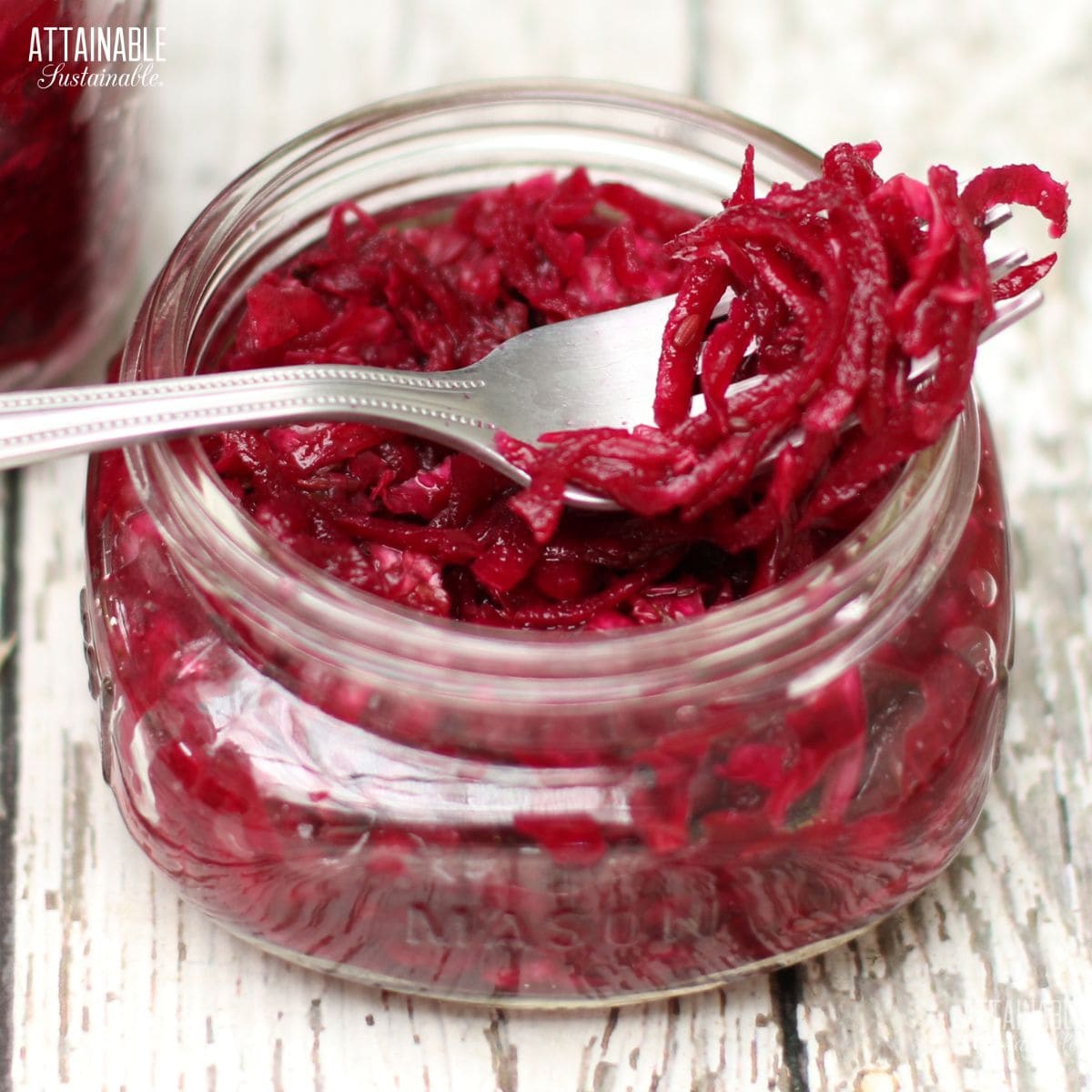
According to Harvard Health, fermented foods can give your body a dose of healthful probiotics — those live microorganisms that are crucial to good digestion.
This bright red beetroot sauerkraut recipe is a simple way to both extend the shelf life of beets and give your gut a boost!
The Handcrafted Pantry

Ready to DIY your pantry with more wholesome ingredients? Check out my ebook, The Handcrafted Pantry! Filled with delicious recipes for some of your favorite condiments, snacks, and toppings, it’s the guide you need to start skipping packaged products and embrace homemade.
Fermented Beet Kraut
The combination of cabbage and fresh beets makes for a really active ferment that will bubble away on the countertop until it achieves the tangy crunch that makes kraut such a favorite.
5 Easy Steps to Transform Your Pantry!
Ready to switch from store bought to homemade? Let me help you make some changes! Grab my FREE five-part guide to getting started.
Ingredients
Beets — These will add a wonderful flavor and color to your kraut! It transforms the entire jar into a perfect, pretty red. If you have orange/yellow beets, those will work just fine, too, though obviously the color will differ.
Cabbage — I used a combination of green and red/purple cabbage here, but you can of course use what you have available. It will all be the same color in the end!
Salt — This is what aids in fermentation here, so pick a good salt without additives.
Coriander seeds — I think it’s the perfect kraut addition, but you can leave it out if you aren’t a fan.
How to Make Beet Sauerkraut
Mix the ingredients in a very large bowl and start mixing. I recommend your hands, and you can use food-safe gloves so you aren’t staining your skin!
Transfer the cabbage beet mixture to a large jar and tamp it down. You can buy a special tamper if you’ll use it often, but the handle of a large wooden spoon or a piece of dowel also works well!
Top off the jar with distilled water (not tap water!) if there isn’t enough natural liquid released. The mixture must be completely submerged in liquid.
Add a weight and lid and let it get to work.
FAQs
Do I need special fermenting equipment?
Not always. You can tamp down with anything, and even the weight doesn’t have to be “perfect.” A clean rock works. I’ve even seen people use a cabbage leaf. Just fold it a few times to fit it in.
What sort of lid should be on my jar?
A fermentation lid or airlock are the safest in that they allow gas to escape without you doing anything. You can simply use a regular screw top lid, but you’ll want to release the gas once a day for sure so you don’t have any problems.
Will I be successful at fermentation?
I promise, it’s really easy to make kraut! The key here is to keep the produce inside the liquid and not in contact with air. Also, keep in mind that if you are doing sourdough, kombucha, or other fun projects, you won’t want them right by each other in the kitchen. They can release their natural “bugs” and combine into some not-so-nice projects. So keep your ferments in their own space!
Storing Sauerkraut
Once the beet sauerkraut is flavorful enough for you, cap the jar and store in the refrigerator or a cool cellar.
Serving Beet Kraut
My son likes to use this as part of an oddly satisfying breakfast plate: Smear hummus on a plate, then top it with a couple of fried eggs and a spoonful of this beet sauerkraut.
Click over here for a straight cabbage sauerkraut.
★ Did you make this beet sauerkraut? Don’t forget to give it a star rating below! ★

Beet Sauerkraut with Red Cabbage
Ingredients
- 2 cups cabbage shredded (red or green)
- 2 cups beets shredded
- 1 ½ tablespoons Himalayan salt
- 2 teaspoons coriander seeds optional
Instructions
- Mix all ingredients together in a large bowl. Use your (clean) hands to really work the salt into the veggies. Don't be afraid to give it all a little squeeze; you want the salt to start to bring out the juices.2 cups cabbage, 2 cups beets, 1 1/2 tablespoons Himalayan salt, 2 teaspoons coriander seeds
- Once well mixed, begin transferring veggies tightly into a wide-mouth quart size Mason jar.
- Use a tamper to press the veggies tightly into the jar. There are specialty tampers or you could do as I do and use a large dowel.
- As you press, you'll start to see the juices rise to the top. If your produce doesn't generate enough juice, add just a bit of distilled water to bring the level of liquid above the level of the veggies. (You could also use a bit of leftover brine from another ferment, if you happen to have it.)
- Place a glass weight on top of the sauerkraut, making sure to push out any air bubbles that are visibly trapped under it. It's critical that the vegetables are not in contact with air.
- Place a fermentation airlock or lid on the jar to seal it. If you use a standard lid, you'll need to be sure to open the jar daily to let out any built up gasses.
- Let sit at room temperature for a week or two, checking occasionally to make sure that the veggies remain covered with liquid. This will vary depending upon the temperature in the kitchen. A warmer kitchen results in a faster ferment.
Notes
- Hot tip: Even with airlocks, my beet kraut went crazy and overflowed on about day two or three (called heaving, as you'll read here). You might want to set your jars in a tray to catch accidental spills. (And when this happens, remember that the liquid might need to be replenished.)
- Days two and three are often the most active, but it will continue to ferment as long as its sitting at room temperature. Once the beet sauerkraut is flavorful enough for you, cap the jar and store in the refrigerator or a cool cellar.
Nutrition
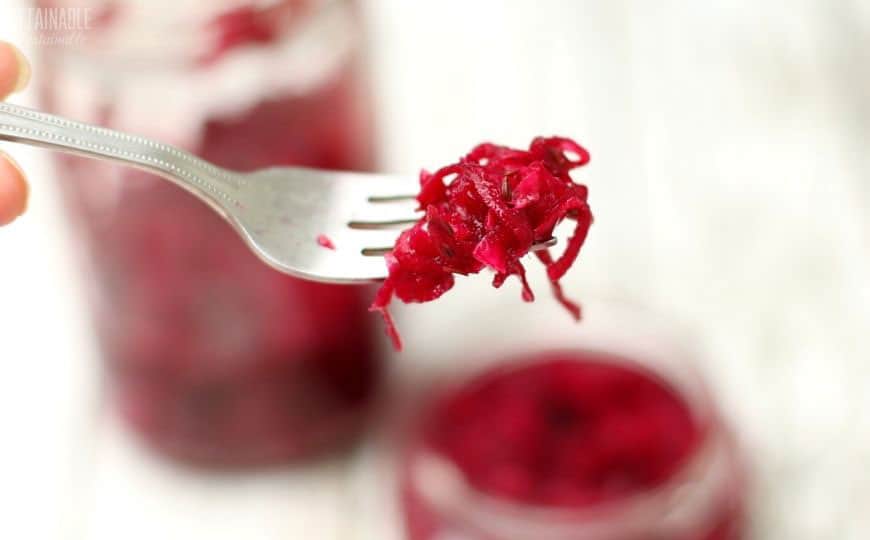
eeds

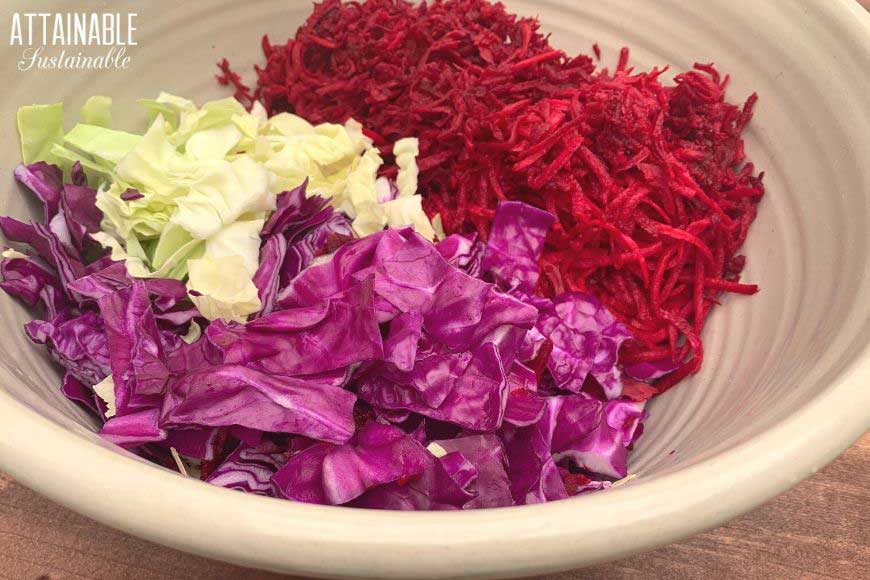
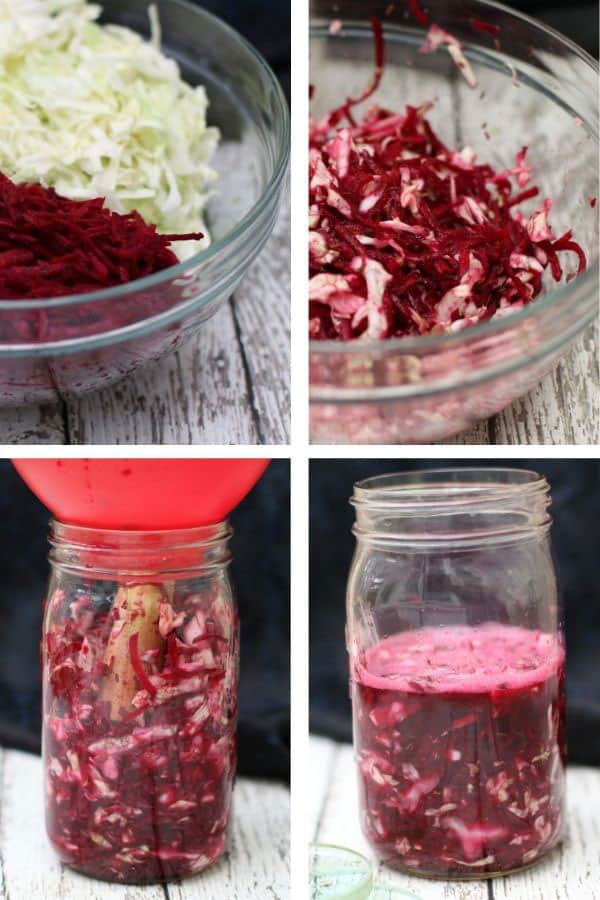
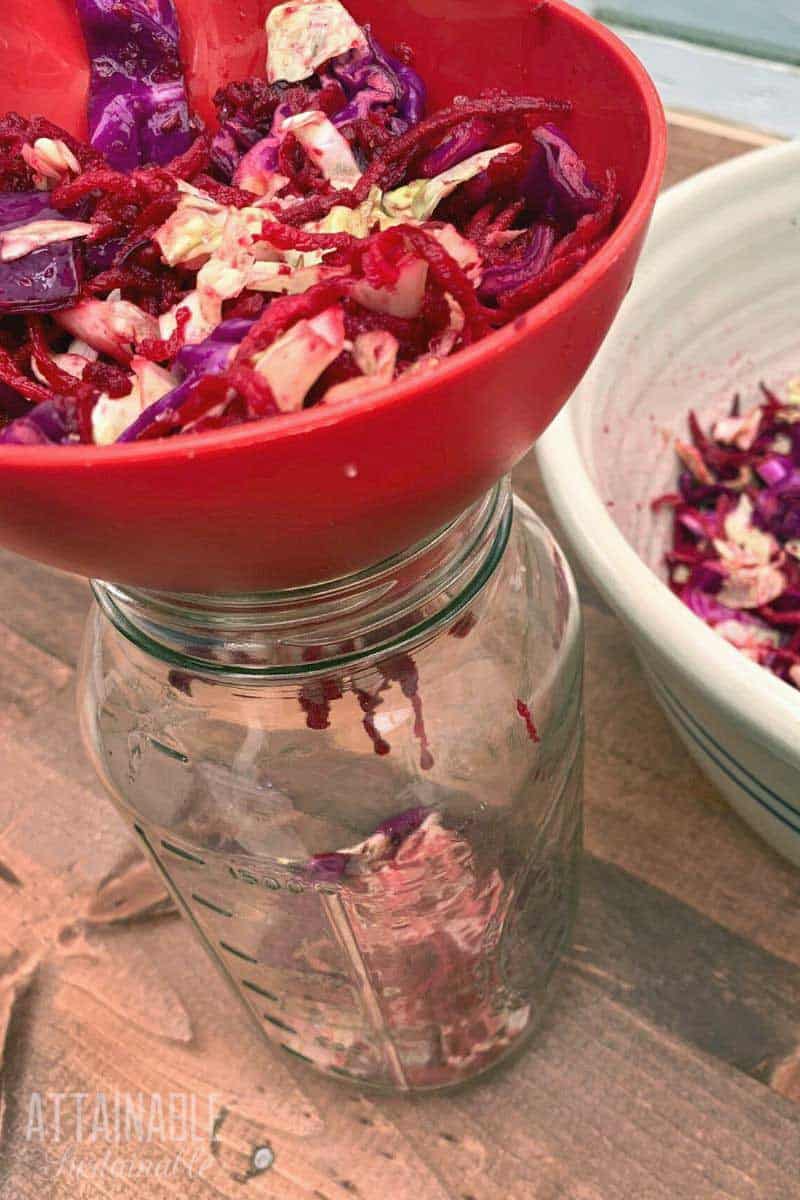
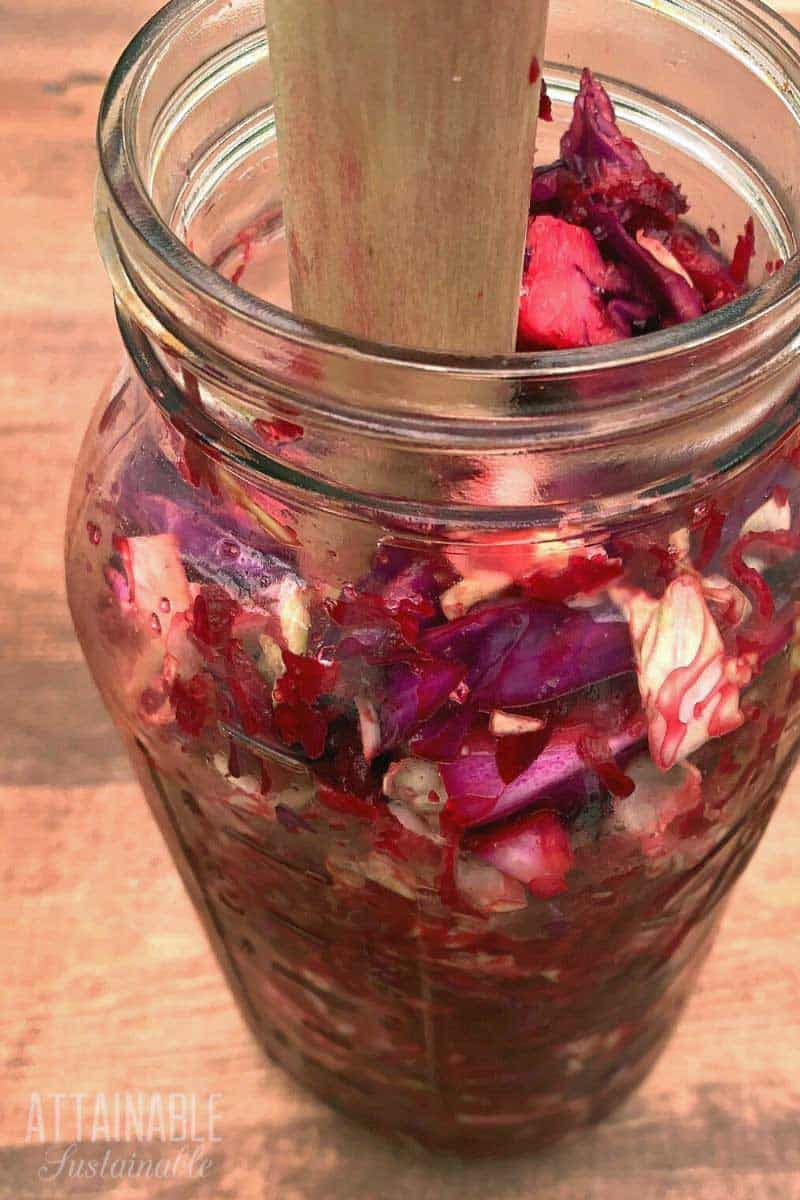
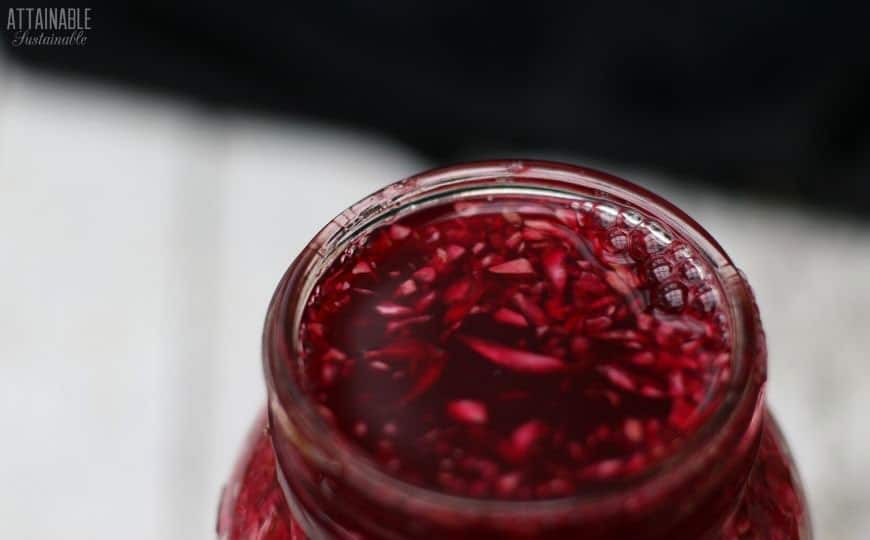
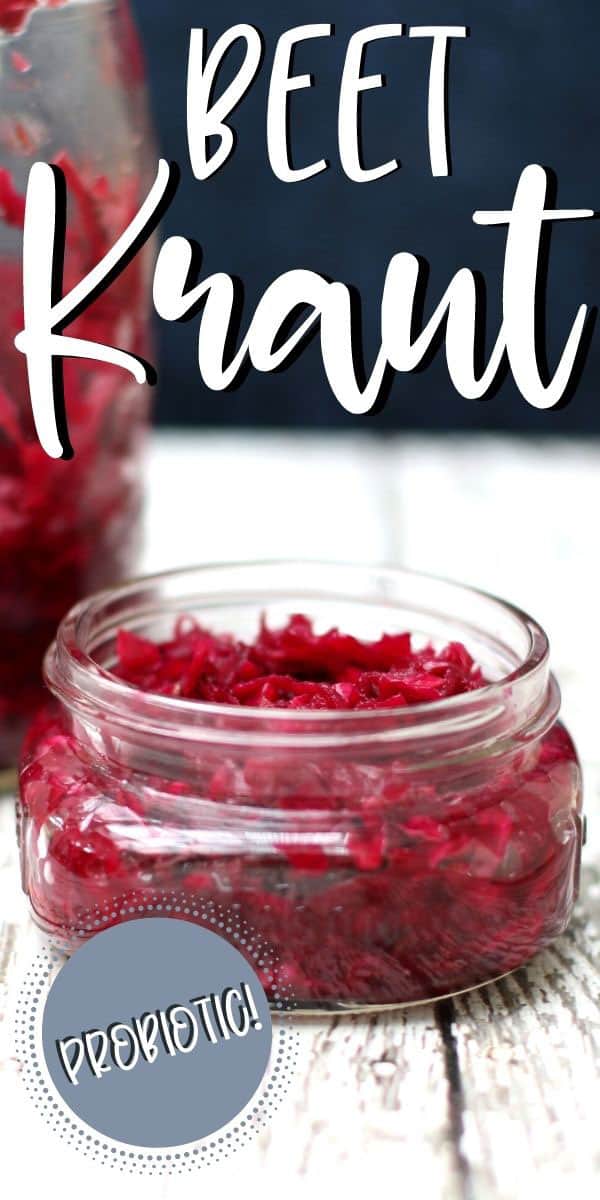

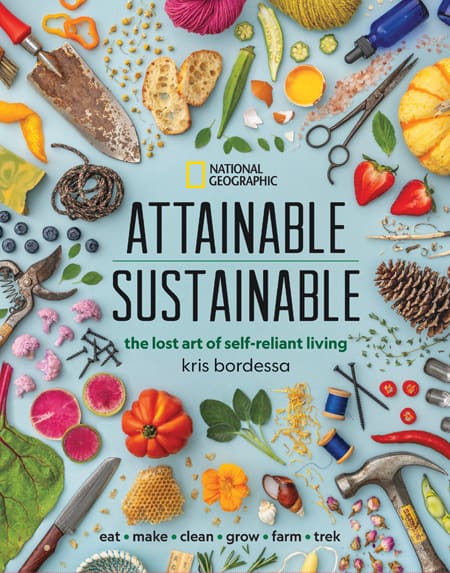
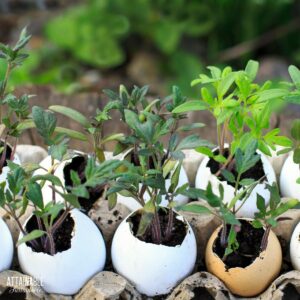
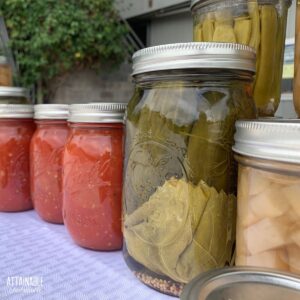

Kris, what form of coriander? Thanks in advance!
Coriander seed – thanks for the reminder that folks in other countries use the term for the leaves, too. I’ll fix that!
Probably a silly question, but is the end product anything like pickled beets that I bought in a jar from the store. That’s the way my family likes them and I don’t know what to expect by this recipe.
This recipe isn’t *sweet like a lot of pickled beets. It has more of a sauerkraut flavor (but beet-y).
Have you ever tried lactofermenting vegetables? I make my own yogurt and kefir. I would love to use liquids from my ferments to ferment vegetables.
Yes, I have a few recipes on my site, check them out 🙂
Hello
One Fermented, how long does it last in the fridge or a cool basement? Doesn’t it have to be canned for storage?
This looks so good! Thank you!
It should keep in a cool place like the refrigerator for up to six months or longer, but it will probably get eaten by then! No need for canning.
Do you mean coriander seed, or dried leaf?
I made two jars. One jar the brine is a beautiful red but in the other it’s brown…any ideas why?
I’ve had this happen. The only thing I can think is that the jar itself had some sort of residue? I’ve taken to washing “clean” jars right before I start a ferment.
cook the beets first ?
Nope!
Dumb question, did you peel the beets before shredding?
Totally up to you. The beet skins are edible. Just be sure to clean them well.
Thank you for the recipe!
I do my fermenting in a crock, would I use the same time frame as regular sauerkraut
I am SO sorry == I never saw this comment until now! Yes, the time frame for fermentation would not change.
I have never seen beets used in a sauerkraut recipe, but I don’t see why not! This is great and I love beets to boot! Can’t wait to try this recipe at home. I usually just buy sauerkraut from the store, but I think its about time I start fashioning my own in my kitchen! Thanks for sharing!
Love this idea, I’ve been wanting to try fermenting beets a different way where they would be softer as I have a hard time with hard vegetables, but I want the benefits of the beets being fermented, yeah and i’m with you on shredding some tiny tined out carrots..